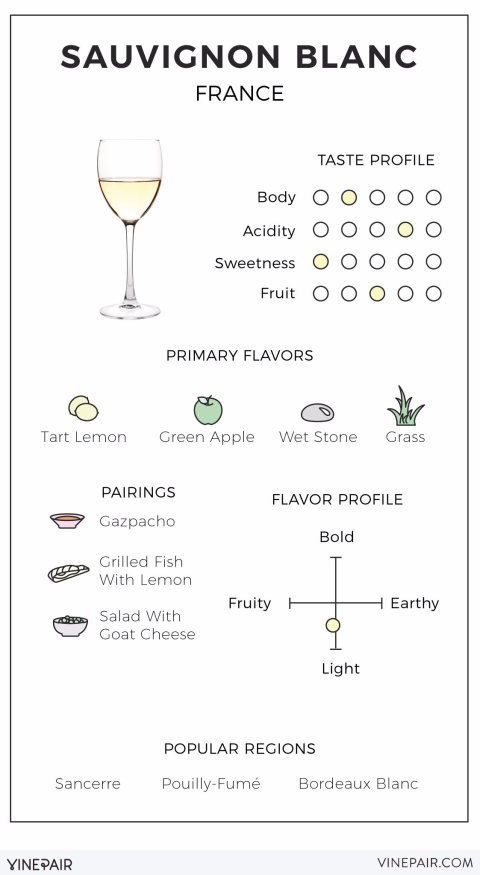Happy Sauvignon Blanc Day! I’m about a week late – it was last Sunday – but seriously, who’s counting? Everyday is a wine holiday if you ask me, and spring is a great season to enjoy Sauvignon Blanc everyday. In this article, I will explain to you everything you may need to know about this much loved wine. And in the following article, which I’ll be releasing on Tuesday, I’ll give you a list of Lebanese Sauvignon Blanc wines to try, whether varietals or blends. So follow me on Facebook and Instagram and stay tuned!
Sauvignon Blanc
Sauvignon Blanc, which means “wild white”, is a white grape variety originating in Bordeaux, France. It makes highly aromatic wines that are high in acidity, medium bodied, and almost always dry. Moreover, Sauvignon Blanc varietals tend to lose fruitiness and become stale with age, so they’re rarely oak aged and are meant to be drunk young while they’re still intensely refreshing.
However, Sauvignon Blanc is not always so predictable. It can differ in profile depending on the climate it’s grown in. The main fruit flavors evident in Sauvignon Blanc are: lime, green apple, passion fruit, and white peach, and the primary flavor will range from lime to peach depending on how ripe the grapes were when making the wine, i.e. how cool or warm the climate is. Also, Sauvignon Blanc is unique from other white wines with its herbaceous aromas, like bell pepper, jalapeño, gooseberry and grass.
The two main and very different expressions of Sauvignon Blanc produced today hail from opposite sides of the globe: France and New Zealand. I’ll introduce you to each style briefly.
France
There are two premium Sauvignon Blanc wine regions in France, the Loire and Bordeaux. Sancerre and Pouilly-Fumé are the most prominent Sauvignon Blanc varietal producing appellation d’origine contrôlée (AOC) in the Loire. On the other hand, a premium white Bordeaux is usually a blend of Sémillon and Sauvignon Blanc. Both regions produce distinctively fruity and generally similar wine styles. Below is a simplified and accurate profile of French Sauvignon Blanc by Vinepair.com: 
New Zealand
Before the 1980s, no one had heard of Sauvignon Blanc, even though many people were already enjoying it regularly whenever they drink the popular Sancerre. However, in that decade, New Zealand decided to start growing Sauvignon Blanc vines. Ever since, Marlborough and a couple of other regions have established themselves as the classic New World regions for very iconic Sauvignon Blancs. Many producers experiment with Sauvignon Blanc as they try to make wines that are unique from the old world. Some are using oak, for instance. Yet the classic New Zealand Sauvignon Blanc is dry, highly acidic, medium bodied, and definitely not oaked. It’s also much more aromatic than the French equivalent. Due to New Zealand’s huge success with Sauvignon Blanc since the 80s, other New World countries have arrived to the scene, such as California, Chile, and South Africa. Here is a simplified and accurate profile of New Zealand Sauvignon Blanc by Vinepair.com:
This was all you need to know about Sauvignon Blanc! Stay tuned for the next article I’ll be publishing on Tuesday. I’ll give you a list of Lebanese Sauvignon Blanc wines to try, from varietals to blends. So follow me on Facebook and Instagram to know when it’s out! And don’t forget to brag about your knowledge the next time you uncork a bottle with your drinking friends. You’ll sound all fancy and know-it-all.
See you soon with another glass of red!



2 thoughts on “This is all You Need to Know About Sauvignon Blanc Wine”